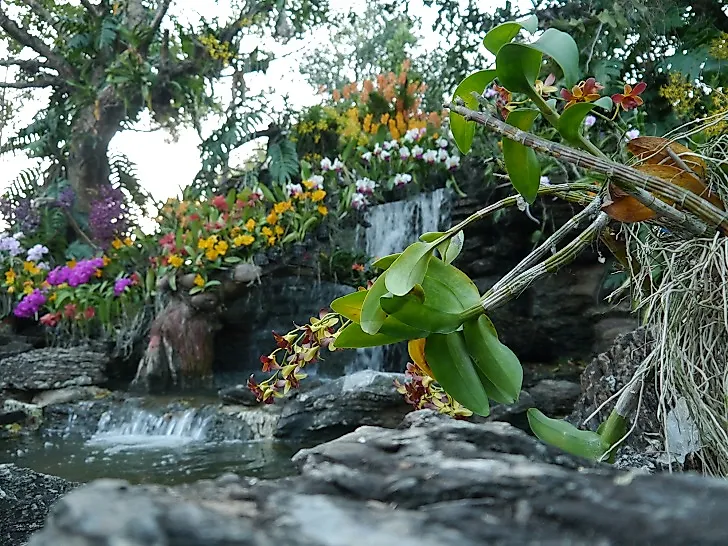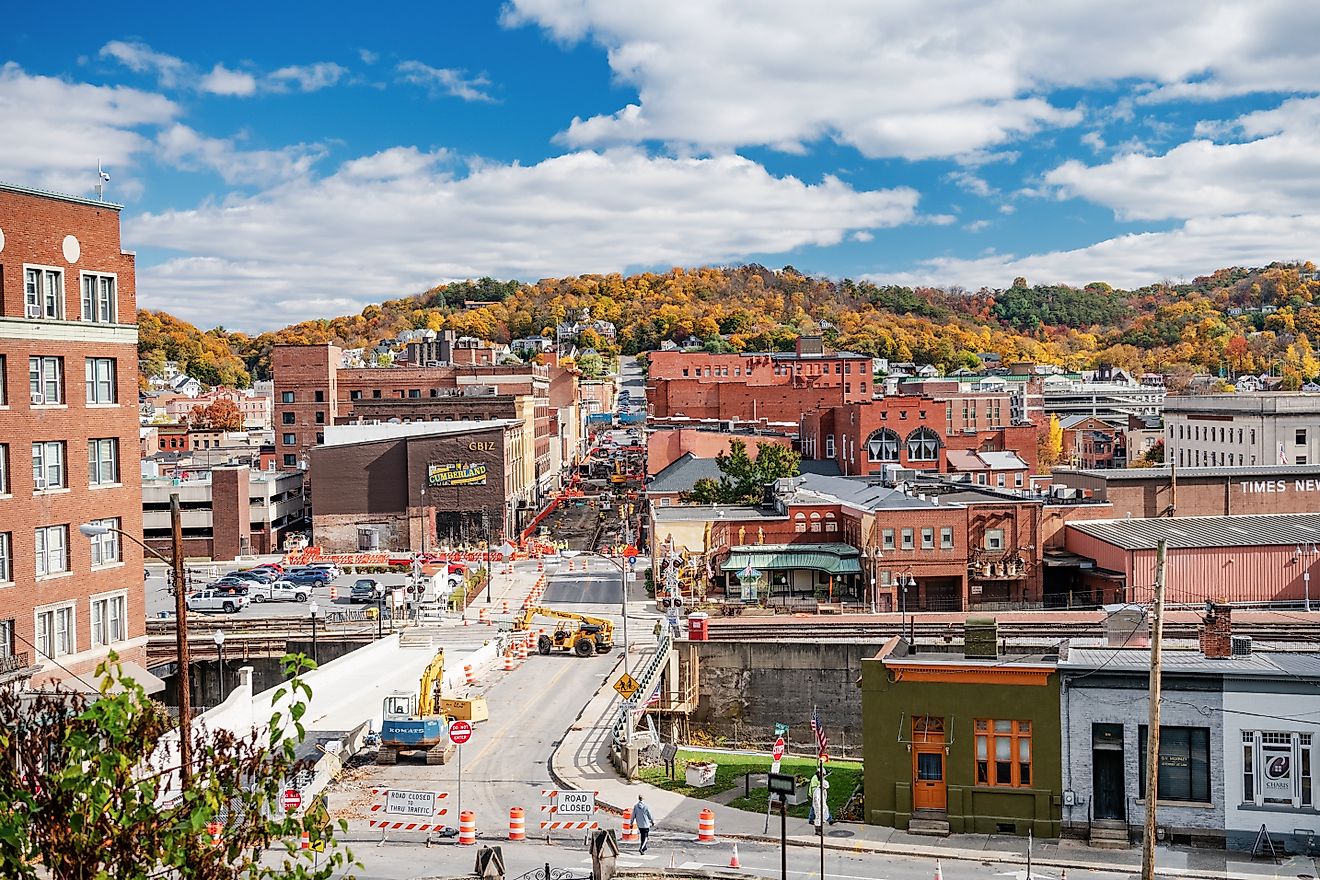Singapore Botanic Gardens

Singapore Botanical Garden is more than three times older than the nation of Singapore itself. The gardens are 157 years old, having been established in the year 1859. These botanical gardens embody British colonial influences and the spread of rubber plantations in Southeast Asia. Most of the 31-hectare garden dates back to the middle of the 19th Century when the British founded it as a semblance of the Malay jungle. There are about 3,000 tropical and subtropical plant species and an herbarium containing 500,000 preserved specimens. Singapore Botanical Gardens lead the world in orchid research and provides a vast expanse of the natural landscape right in the heart of the city. The Garden was listed by UNESCO as world heritage site there are only three gardens in the world which have been honored by UNESCO. Tourists and residents frequent these gardens for the relaxing and aesthetic value they offer.
5. Description and History -
The Botanical Gardens of Singapore house an array of beautiful botanical and horticultural attractions located in Central Singapore, only a five-minute-long drive from the famous Orchard Road. The Gardens have a rich diversity of plant collection with universal significance. Sir Stamford Raffles, a keen naturalist and the founder of Singapore established the first botanical garden on Government Hill at Fort Canning in 1822. His main aim was to introduce the cultivation of commercial crops. The garden closed in 1829, but the Agri-Horticultural Society developed another garden in 1859 at the present Tanglin site. The botanical garden was later handed over to the government in 1874. In its early years, the gardens served as experimental stations for native and imported plants with potential for commercial value. By 1888, under the guidance of Henry N. Ridley, the botanical gardens became a center for research of the Brazilian rubber tree, Hevea brasiliensis. In those years Ridley developed an improved technique for tapping rubber for better latex yields, an innovation that revolutionized Singapore Economy. In 156 years, the garden has evolved from an ornamental garden with terraces, roads, a small zoo, and a parade band area to the leading equatorial garden today with 82 hectares. Crops such as rubber and orchids are grown here in large scale.
4. Tourism and Education-
The National Orchid Garden has over 1,000 orchid species, providing a suitable home for the World Orchid Research Center. So far more than 200 hybrids have been created courtesy of research facilities operating in the garden. School going children and families visit the Jacob Ballas Children Garden which offers an excellent education, an interactive center for all ages, and practical sessions. For example, the Children Garden has exhibits that show how photosynthesis takes place and there is also a mini-garden to showcase the extraction of plant dyes and beverages. The National Biodiversity Center of Singapore is also located in these gardens. Visitors visiting the gardens are treated to the vastness of local flora, a beautiful range of wildlife, and a top-notch location for picnics or weekend getaways. The gardens span over 183 acres, offering the best sights and sounds for students, nature enthusiasts and families.
3. Uniqueness -
Nested directly in the heart of Singapore, these botanical gardens are the only large English style formal gardens to be found in the tropics. Behind closed doors trials of various crops, most importantly rubber went on behind closed doors. Today, those ancient trees that were part of the plants used to test timber or latex properties are a testimony of the economic survival of the region. The Burkill Hall, a colonial house built some 150 years ago provides a home to more than 2,000 hybrid orchids, Singapore goodwill ambassadors. More than 200 species of orchid hybrids are named after famous celebrities, including Jackie Chan, Margaret Thatcher, and Nelson Mandela. The Gardens also resemble a tropical Valhalla decorated with the glassy lakes, themed gardens, and rolling lawns. The gardens contain the rarest patch of dense primeval rainforests that provides a home to more than 300 vegetation species half of which are now considered as critically endangered species. The National Orchid Garden, the Nation’s legacy, and pride provides a home to more than 1,000 species and 2,000 hybrids with 600 of these species being on display. In fact, this is the worlds’ largest showcase of tropical orchids. The Ginger Garden houses more than 250 members of the Zingiberaceae. The garden was named UNESCO world heritage site in 2015, there are only two other gardens in the world which have been honored with the title, one in Italy, the Padua Gardens, and the other in England, the Royal Botanic Gardens in Kew.
2. Natural Surroundings, Sights, and Sounds -
The gardens have developed around a 3-core concept. The first core, Tanglin, is the heritage site which retains the ancient charm and favorites of most historical gardens. The second, the Central Belt, is the tourist center frequented by tourists and residents. The third and final component, the Bukit Timah Core, is the education and discovery zone. The National Orchid Garden with its 600 species and hybrids offers spectacular sights, and the collective beautiful view of Singapore's national flowers is an amazing sight to behold. The Jacob Ballas Children Garden offers excellent rainforest sites and adventures as well as marsh and farm and marsh gardens. The Swan Lake, home to numerous aquatic plants and fishes, is a graceful sight. The gardens also offer a host of cafes and restaurants for the hungry and thirsty visitors.
1. Threats and Conservation Efforts-
Littering is the primary threat facing the botanical garden. Visitors and children touring the park throw their litter on the ground. Sightseers also tend to carve trees stems. Human developments near the gardens are not much of a threat as they correspond to the gardens properties and authenticity. Much of the backyard lies as a National Park while other areas are either Conservational Areas or Tree Conservation Areas with the Rainforest areas designated as the Nature Area. The Planning Act of Singapore protects these gardens by regulating conservation and any development works on the property. The Singapore Concept Plans takes care of strategic planning on the site, and land use plans are governed and carried out by the Urban Redevelopment Authority (URA), the state's land use, planning, and conservation authority. The Singapore Botanic Garden has a Management Plan developed to ensure protection, conservation, and transmission of the Outstanding Universal Value attributed to the property.











